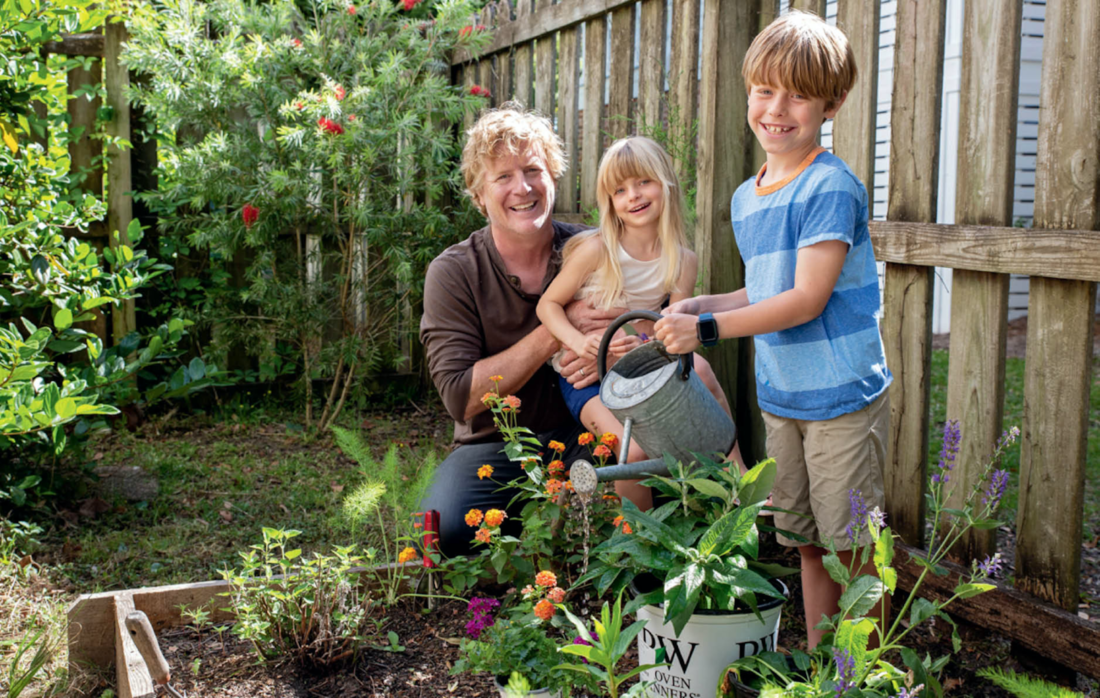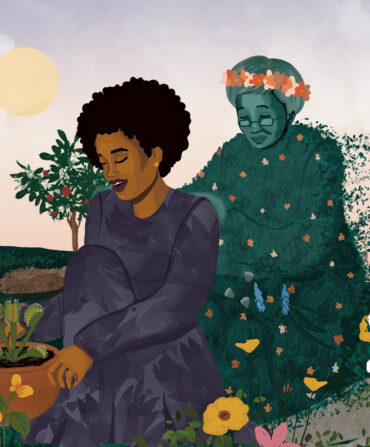For me, it started with a couple of milkweed plants, specifically aquatic milkweed, which is native to South Carolina. I wanted to teach the kids about monarch butterflies—how the life cycle of one animal species could depend entirely upon one plant species. I also wanted them to witness the magic of caterpillar to chrysalis to butterfly, and to marvel at the idea that the migration of these wispy and fragile creatures can span 2,500 miles.
We cleared out a small, mostly unused space beside the house that unruly privet had lorded over, and put in a raised bed. Along with the milkweed, we soon added salvia, goldenrod, and brown-eyed Susans, all plants that would attract butterflies, bees, and even hummingbirds. I proudly told the kids we now had a “pollinator pocket.”
In the past, we had occasionally seen a monarch wafting by in the backyard, but suddenly we had a stopover zone. Butterflies left pinhead-sized eggs on the undersides of our milkweed leaves while fueling up on the flowers’ nectar. And before long we had our first monarch caterpillars, munching leaves at an astounding rate. That’s when the light went on. If this small garden box could make a difference, why not dedicate more space? Soon I began eyeing the entire yard.
A quick inventory of the trees proved they were mostly native (live oak, eastern red cedar, wax myrtle, sycamore), other than a dread tallow tree some thirty feet high. An import from East Asia, the tallow is not an ugly tree, but it’s a prolific seed producer, and its offspring can quickly outcompete native species for nutrients and light. It will soon be coming down in favor of a red mulberry. I’ve added a loblolly pine that the kids and I grew from a seedling we found in the woods (it averages an astonishing twenty-four inches of growth or more a year) and a magnolia that’s trudging along in what I call its gangly preteen years. I also rolled a large piece of trunk from an old water oak that a neighbor had felled to a semihidden corner of the yard to decay, providing purchase for valuable fungi and a crumbling home for beneficial insects.
As for my lawn, well, the manicured grass is in a tight battle with the wild clover (which the bees prefer), and I really haven’t taken a side yet. I have dreams of pollinator pockets spread all across the yard, with a walking path winding through them. But for the time being, my daughter, Rose, needs room to practice soccer, and my son, Sam, needs space to toss the football with his buddies. Room for wild and child, if you will. For now, we consider it the perfect balance.
Follow David DiBenedetto on Instagram and Twitter @davedibenedetto








